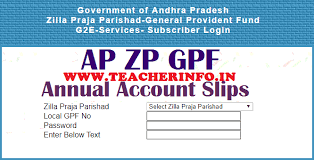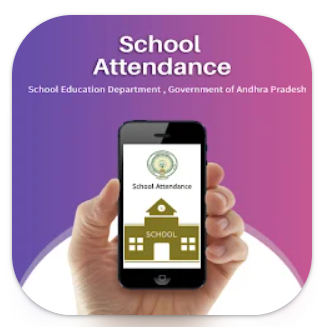R.C. No.ESE02/329/2022 SCERT Dated:26/06/2022
Sub:-School Education- SCERT-AP- Academic and Administrative reforms -Preparation of lesson plans- Templates communicated and guidelines
Ref:- 1. Observations of the School Education Higher Officials during their visits to schools.
2. Pro. R.C. No. ESE02/290/2022-SCERT, Dated 04/04/2022 of the Commissioner of School Education, Andhra Pradesh issued.
The attention of all the Regional Joint Directors of School Education and the District Educational Officers in the state is invited to the reference 2nd above wherein certain guidelines were issued regarding the implementation of Academic and Administrative reforms in the state. As part of the above guidelines, the preparation and implementation of the lesson plan is one of the topmost academic reforms to be implemented in all the schools for ensuring the quality of education through adequate class-specific learning outcomes among students.
In this regard, the SCERT-AP has prepared two (2) Lesson Plan Templates
Template - 1: Model lesson plan for multi grade teaching.
Template - 2: Model lesson plan for all types of High schools.
Therefore, all the Regional Joint Directors of School Education and the District Educational Officers in the state are requested to issue necessary instructions to all the Feld functionaries for effective implementation of the lesson plan and instructions to ensure right teaching at right level and achieve adequate learning outcomes at all levels.
Further, all the Regional Joint Directors of School Education, District Educational Ofcers, Principals of DIET and all inspecting officers in the state shall ensure that all teachers are following the guidelines and preparing the lesson plans as per the templates suggested by SCERT. The services of resource persons in DIETs shall be used for capacity building. and training of the teaches for the effective implementation of these plans.
If any best practices are identified the same may be sent to the Director SCERT for disseminating across the state for its adaptability.
DOWNLOADS:
MODEL LESSON PLAN FOR MULTI GRADE TEACHING
MODEL LESSON PLAN FOR ALL TYPES OF HIGH SCHOOLS
A.2) Plan for one concept or skill that is taught across the grades present in the classroom for students to learn with and from each other easily.
For example if the Listening Skill LO of responding to questions is planned, this needs to be planned across grades for teachers to plan a simpler to complex task for the same skill. This will help create groups of students and also peer-learning can also be facilitated.
A.3) Chalk out the portions of the teaching plan that can be taught collectively to all the grades before giving independent work to different grade level students. For example in the unit/month plan given above for Grade 3, suppose you have Grade 2 and 4 as well, plan to teach picture reading across grade by picking up simpler to complex pictures. But for the introduction of the lesson, modelling picture reading, instruction can be given collectively. Example of stages in a lesson plan that can be taught collectively-
● To introduce a new topic
● During discussion or brainstorming – sharing ideas with the rest of the group
● explain how activities or projects will be done
● When dealing with content or activities where it does not matter if learners
● respond at different levels (e.g. story-telling, physical education, outdoor
● games, field trips and projects)
● To practise learning – such as reciting tables or poems
● To summarise learning at the end of a lesson
● For ‘Story Time’
A.4) Have the classroom's physical set up according to the multigrade teaching and stages of the lesson. For example
a) Direct Teaching- The teacher is instructing the class, demonstrating a technique or conducting an experiment.
(b) The Horseshoe- This can be used for direct teaching,or for teacher led discussion. The arrangement encourages the children to address and question each other as well as the teacher.
(c) Unsupported cooperative working- The children share a task and cooperate in completing it. The arrangement invites face to face interaction and conversation. It is useful in topic and project work and can be used for shared practice sessions.
(d) The Mat. - This is especially useful with younger children for storytelling, singing, and news exchanges and for briefing them on their next activity. Sometimes children like to sit in a relaxed position on the mat to read.
(e) Resource activities- This is an area in which equipment, books, charts and materials can be kept for specific curriculum areas, e.g. mathematics, science, language, art and crafts. Often room corners are the best positions for resource areas. Resources can be taken from the area, or a group can work inside it.
(f) Independent study- An area of this kind enables learners to work privately without distraction. It is useful to place the tables and chairs/benches facing a wall. Space in a corridor or on a shaded veranda can also be used for an independent study area.
A.5) Display students’ work - stories, poems, and art. Space can be reserved for a notice board to take the timetable, classroom rules, coming events, etc. If the walls are smooth and chalkboard paint is available, sections at a suitable height can be prepared for the children to use, both inside and outside the classroom/building, e.g. for practice in computation and language and for drawing and design.
Reference: https://drive.google.com/drive/u/2/folders/1qD1DzOflLi-uvbj03gh8Sv3nibDp6e62
General Guidelines for Planning the Lessons
● Use the Nipun Bharat Guidelines for Foundational Grades for understanding how children learn at these grade levels, well. Use those to plan the experiences and process of the classroom. For higher grades, NCF 2005, Position Papers for various subjects provide insight into how children learn these subjects better.
● Ascertain which concepts and skills are to be taught in which month, keeping the number of working days in each month, holidays and seasons in mind. For example, learning of volume requires students to pour water in various containers in primary grades and can be avoided in winters!
● Create lesson plans for each concept/unit at a time to look at a concept and its complete cycle from induction to practice and assessment at one go in a holistic manner. .
● Use faculty meetings- If possible, create lesson plans in collaboration with all the teachers of one grade teaching a particular subject. This creates opportunities for learning from each others’ experiences and can reduce duplication.
● Use vertical faculty meetings- Conduct these meetings once a month to understand and plan for bridging the learning gaps, create grade level outcomes and create remedial plans. This can help in multi grade teaching as well. These meetings can also be conducted at a complex level as well.
● For chalking our Learning Outcomes, Experiences, Use of TLMs, Assessments, use NCERT, SCERT Resource Materials and State textbooks. Open source materials and videos on DIksha Platform, Youtube can be used based on the learning objectives of each grade.
● All the activities, Posters, pictures and other materials need to be free of gender, caste, class biases.
● Have faculty meetings, sharing the plans/tasks/processes that worked well and that did not work well. Reflect and review the lesson plans once a month with your colleagues and change the plans for next units and academic cycle.
● It is suggested that you create lesson plans in digitized form for making your review and revision easier. This is going to be your asset and can save you time in your next academic sessions and can also enable you to share these with your colleagues.
These lessons are going to be part of your planning and reflection as a professional teacher. Happy planning!









